All products featured are independently chosen by us. However, SoundGuys may receive a commission on orders placed through its retail links. See our ethics statement.
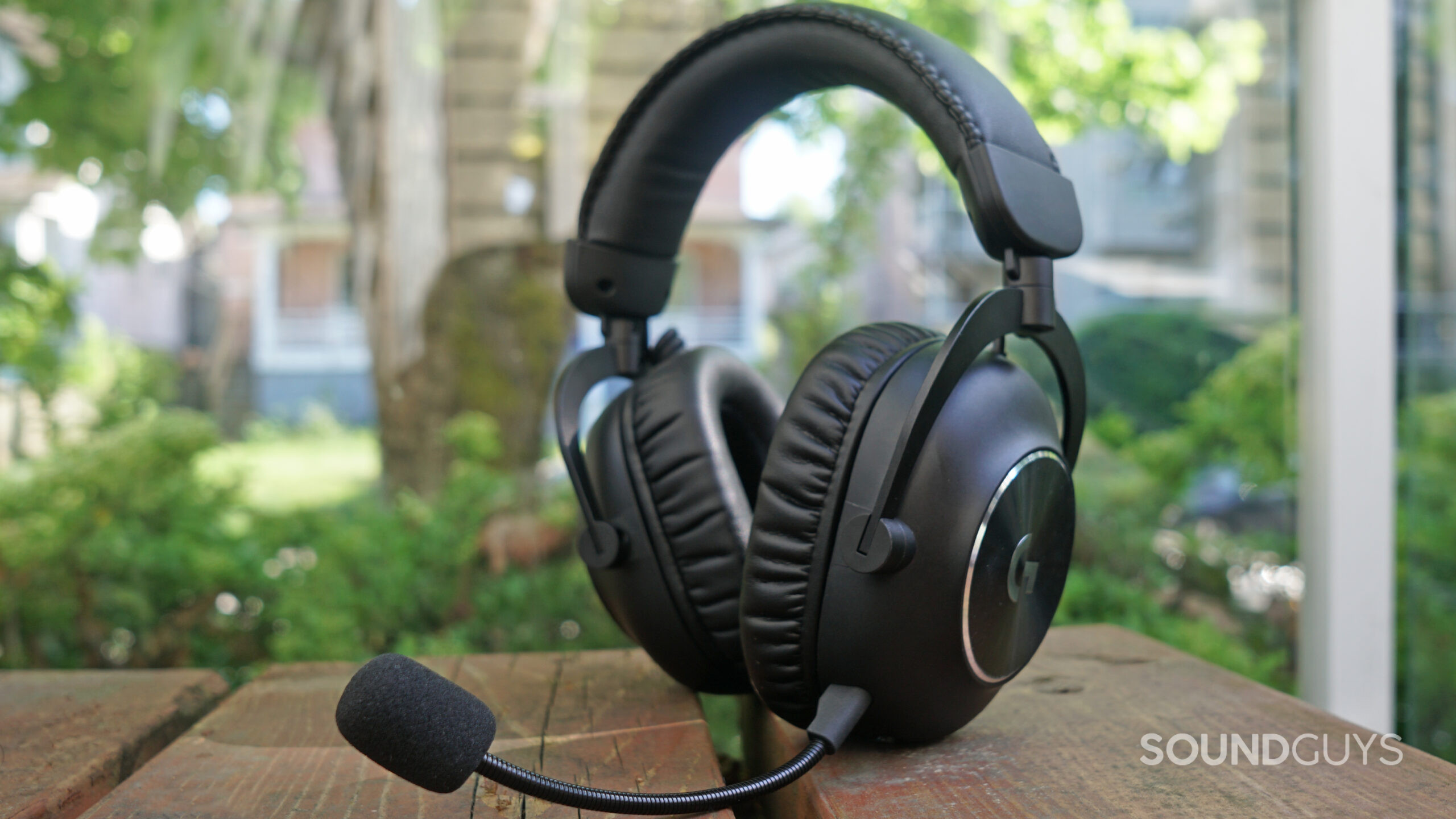
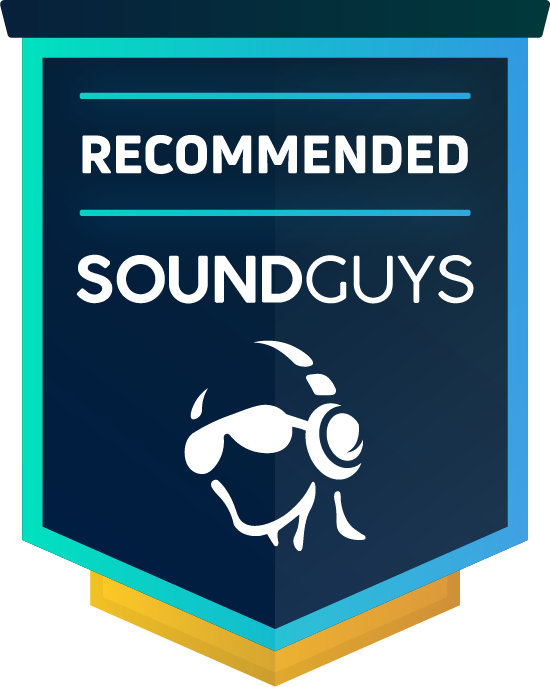
Logitech G PRO X 2 LIGHTSPEED review
Published onApril 10, 2025


Logitech G PRO X 2 LIGHTSPEED
The high-end gaming headset space is a competitive corner of the audio market. While mainstream headphone brands refresh flagship products annually, gaming headsets typically follow a longer cycle. The Logitech G PRO X 2 LIGHTSPEED arrived after a significant wait from its predecessor, bringing smart changes and impressive hardware that have stood the test of time nearly two years after its initial release.
The original G Pro X (and its wireless counterpart) was excellent, and the new model successfully builds upon that foundation while maintaining its position as a top-tier gaming headset in 2025.
- About this Logitech G PRO X 2 LIGHTSPEED review: We tested the Logitech G PRO X 2 LIGHTSPEED over a period of two weeks. It was running firmware version 1.0.3, and the G HUB app ran version 2023.4.404941. The company provided the unit for this review.
- This article was updated on December 12, 2023, to answer more reader FAQs and add our new frequency response charts.
The Logitech G PRO X 2 LIGHTSPEED remains an excellent option for gamers across most platforms, regardless of genre or hobby. Xbox gamers should note the connection limitations, but PC, PlayStation, Switch, and mobile gamers will find a versatile, high-quality audio solution that continues to compete with newer alternatives.
What’s it like to use the Logitech G PRO X 2 WIRELESS?
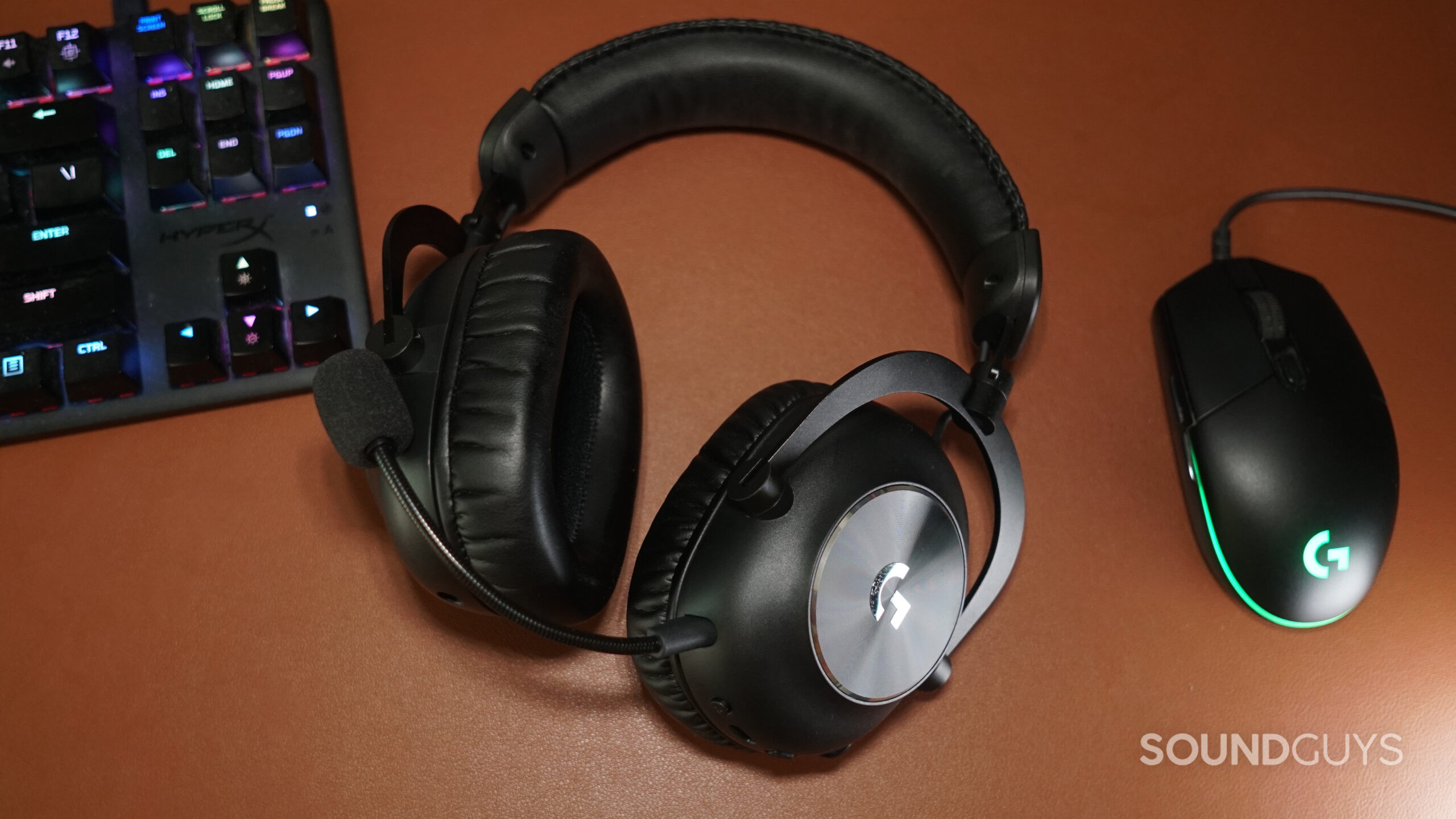
The Logitech G PRO X 2 LIGHTSPEED successfully combines the strengths of both the original G PRO X and G PRO X Wireless into a single product, building on that foundation with smart changes and additions. It offers wireless convenience with all the quality features of the wired version and more. The graphene drivers, while technically interesting from a materials perspective, deliver excellent sound quality that has remained competitive even as newer options have entered the market.
After using this headset for the past two weeks, I’ve been impressed by how well its design has aged. When I first put it on, I immediately noticed the build quality—there’s a solidity to it that many newer, lighter competitors lack. During my testing, I wore it for several 6+ hour gaming sessions and found it remained comfortable throughout, with no painful pressure points developing even while wearing glasses.
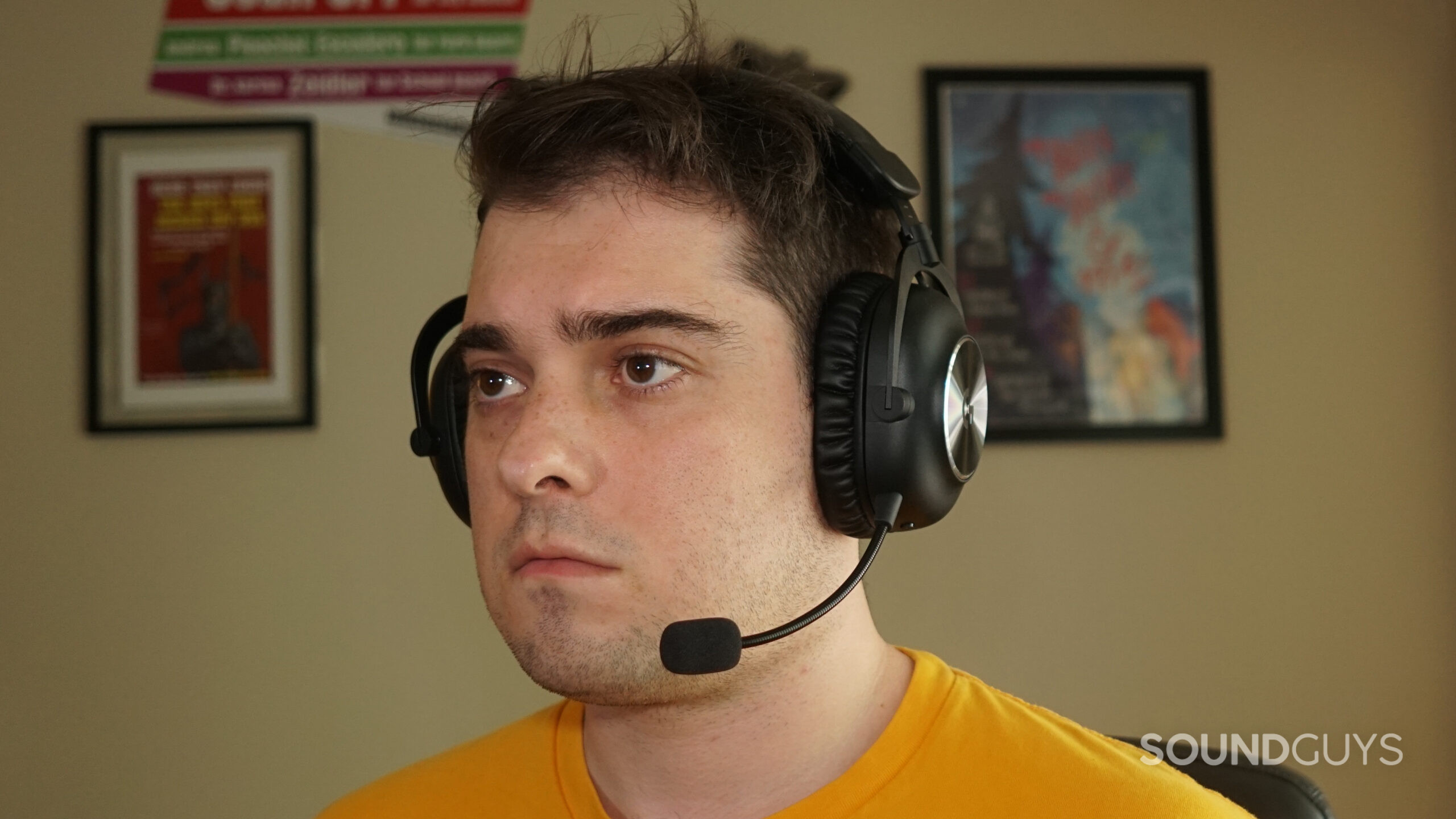
The headphone hinges represent one of the most significant physical improvements over previous models. The primarily metal frame now features an additional hinge just above each ear cup, allowing you to turn each ear cup individually to better accommodate head shape or swivel to lay flat on a desk or around your neck. I found this flexibility particularly useful when transitioning between my desktop and taking quick breaks—being able to swivel the cups flat against my chest when not in use is a small but meaningful quality-of-life feature that I’ve come to appreciate daily.
The G PRO X 2 comes with two pairs of ear pads—soft leatherette and velour fabric. Both provide excellent comfort, but I found the velour option significantly better for long sessions, particularly in warmer environments. During my testing, I switched between both pad types and noticed the leatherette provided slightly better isolation but caused my ears to heat up after about two hours. The velour pads, while allowing more ambient noise in, kept my ears cooler during marathon gaming sessions and created less friction against my glasses. After nearly two years on the market, it’s worth noting that replacement pads are now readily available, which I consider essential for any headset with this kind of longevity.
How do you control the Logitech G PRO X 2 LIGHTSPEED?
The on-ear control layout is elegantly simple: a microphone mute button, Bluetooth pairing button, power switch, and volume dial. Everything else is managed through your device’s audio settings or the Logitech G HUB app on PC and macOS.
Should you use the G HUB app for the Logitech G PRO X 2 LIGHTSPEED?
The Logitech G HUB application remains essential for getting the most from the G PRO X 2 LIGHTSPEED. The app provides access to DTS Headphone: X 2.0 virtual surround sound, a five-band EQ, and Logitech’s Blue Vo!ce microphone feature suite. You’ll also need it for firmware updates and access to the audio sampler tool.
G HUB continues to offer a straightforward user experience, with reliable performance that avoids the bugs and inconsistencies that plague many competitor apps. The EQ and microphone settings are particularly valuable for tailoring the audio experience to your preferences.
How do you connect the Logitech G PRO X 2 LIGHTSPEED?
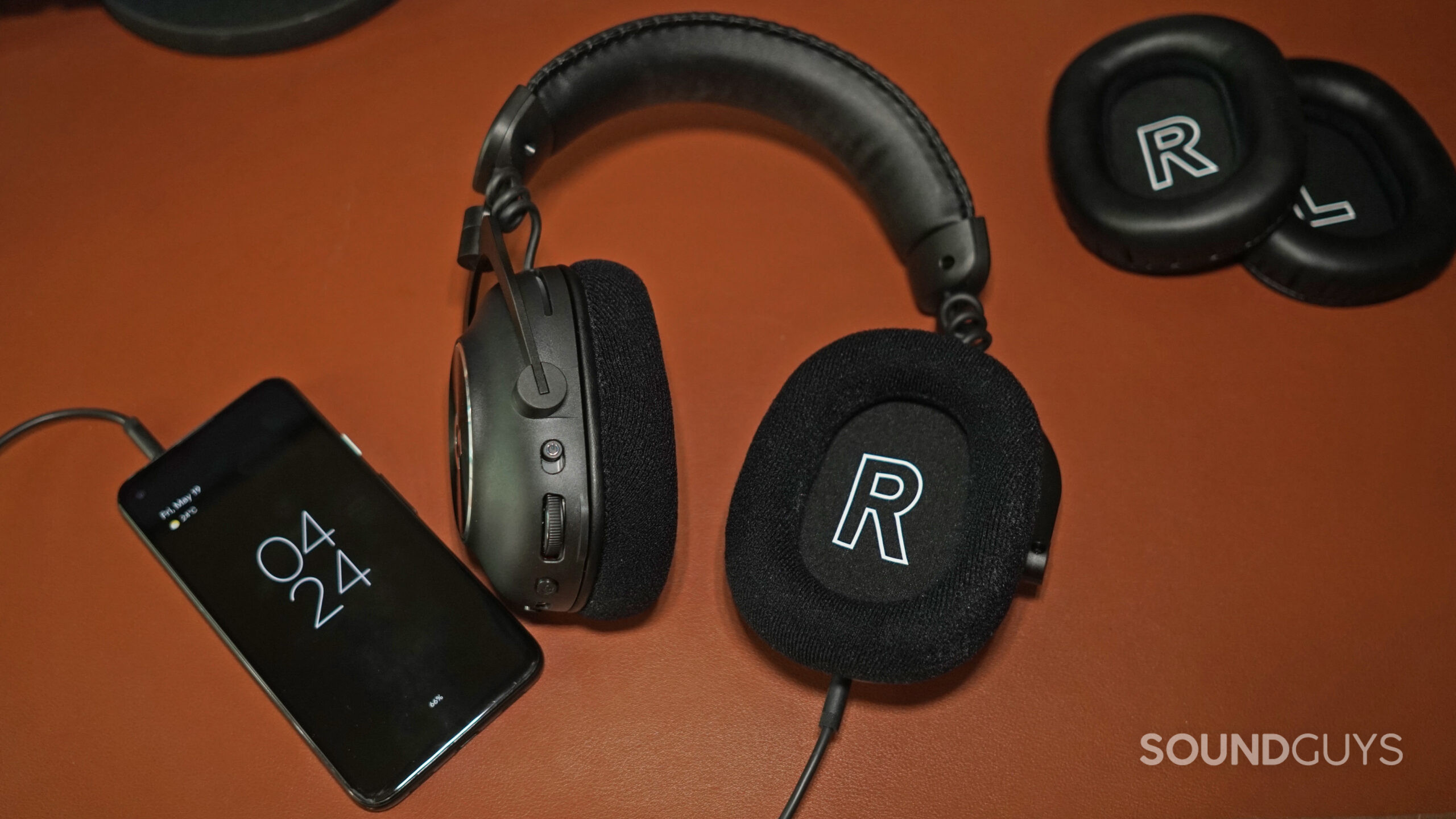
The Logitech G PRO X 2 LIGHTSPEED offers three connection methods: wired via a 3.5mm jack, Bluetooth, and wireless using a 2.4GHz USB-A dongle. The Bluetooth connection supports AAC and SBC codecs, though the lack of aptX remains a minor limitation for Android users.
For PC and PlayStation 5 gaming, the USB dongle provides the optimal experience. During my testing, I connected the headset to my gaming PC, PlayStation 5, and Steam Deck to evaluate cross-platform performance. I was particularly impressed with how seamlessly it switched between my PC and PS5—just unplug the dongle from one device and plug it into another, and you’re ready to go with no re-pairing required.
The 3.5mm TRRS connection works well with Xbox consoles or handheld devices. I tested it extensively with my Steam Deck and found the audio quality remained consistent with the wireless experience, though the loss of wireless freedom was noticeable. When I tried it with my Xbox Series X, everything functioned as expected, but I did miss the wireless convenience I had on other platforms.
The dongle is compatible with the Nintendo Switch when docked but not with other consoles. Bluetooth serves as a backup option primarily suited for music listening rather than gaming due to latency concerns. I measured roughly 200-250ms of latency over Bluetooth during my testing—fine for videos and music but noticeably delayed for competitive gaming.
It’s worth noting that there’s no Bluetooth multipoint or simultaneous connection functionality. The 3.5mm connection only works when the headset is powered off, and while you can pair via Bluetooth even when connected to the dongle, you can only switch between sources rather than receive audio from both simultaneously.
Pairing the headset is super simple.
- Make sure the headset is turned on.
- Press and hold the Bluetooth button until you hear a series of beeps.
- Select the headset in your device’s Bluetooth menu and pair.
How long does the Logitech G PRO X2 LIGHTSPEED’s battery last?
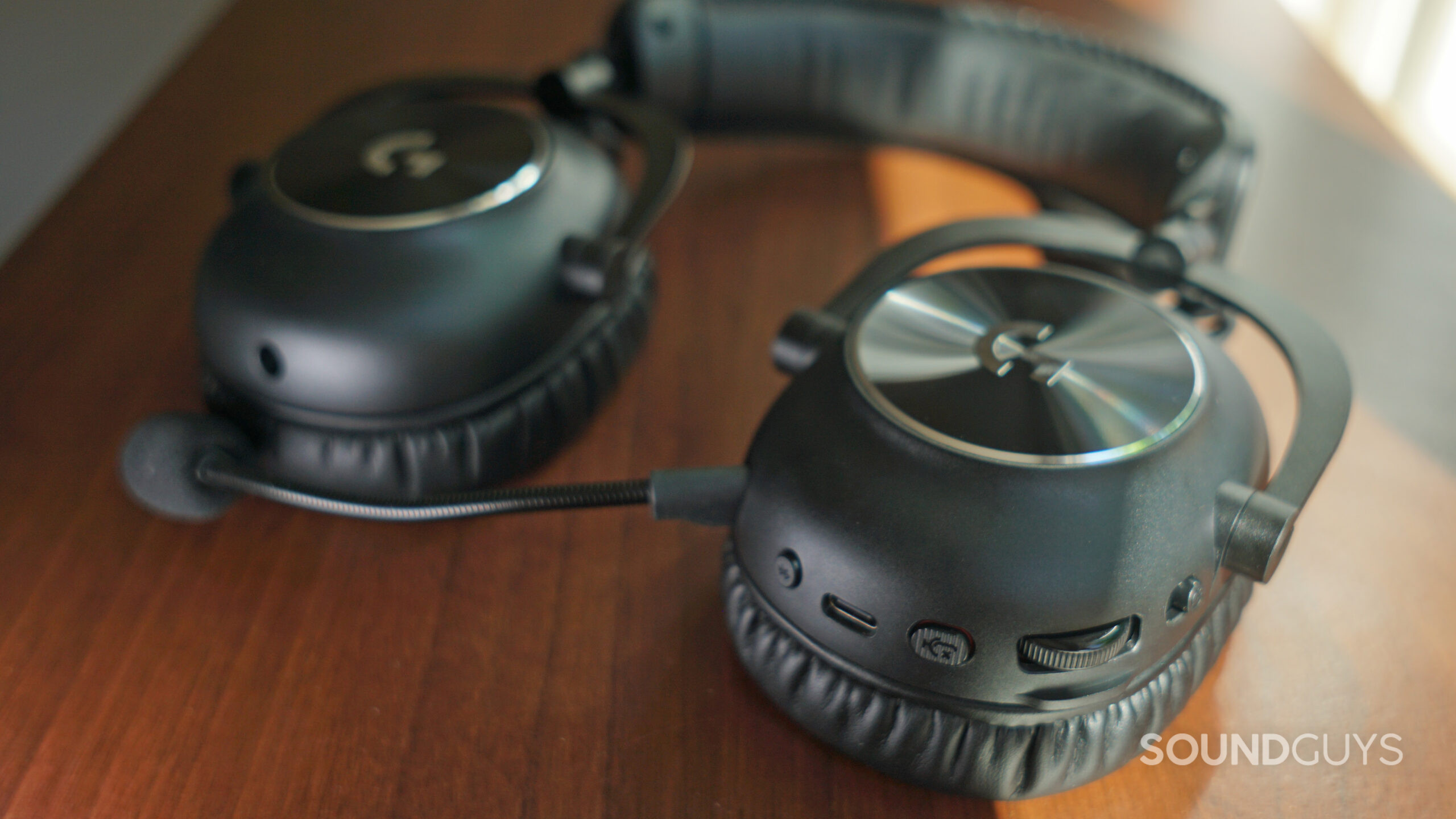
Logitech claims the G PRO X 2 LIGHTSPEED can last up to 50 hours when connected using the USB dongle. In our testing, we found it significantly exceeds this estimate, delivering 88 hours and 27 minutes of playback at 75dB (SPL).
While this impressive battery life doesn’t quite match outliers like the HyperX Cloud Alpha Wireless or the hot-swappable battery systems of the Turtle Beach Stealth Pro or SteelSeries Arctis Nova Pro Wireless, it outperforms most competitors. During my two weeks of testing, I only needed to charge the headset once despite using it for 4-6 hours daily. I timed a full charge from empty at just under 2 hours, which I found reasonable given the extended battery life. Perhaps most impressively, battery degradation seems minimal—even on this review unit that’s been through multiple charge cycles since its 2023 release, I still achieved nearly 80 hours of use per charge. This longevity remains a significant advantage in 2025, especially compared to many newer competitors that sacrifice battery life for lighter designs.
How well does the Logitech G PRO X 2 LIGHTSPEED attenuate noise?
Loading chart ...
The Logitech G PRO X 2 LIGHTSPEED provides average noise isolation for a gaming headset without active noise cancelation (ANC). In my testing environment—a home office with occasional kitchen noise and street sounds—I found it effectively reduced typical household sounds like dishes clattering or distant conversations. I could still hear my doorbell and phone notifications, but they were muffled enough not to break immersion during gameplay.
Where I found the isolation lacking was during a session near my HVAC system and when testing in a coffee shop environment. Low-frequency noises like air conditioning rumble or ambient crowd buzz penetrated quite noticeably, as these are the sounds typically addressed by ANC technology. If you’re comparing this to newer gaming headsets with ANC that have entered the market since the G PRO X 2’s release, this is where you’ll notice the biggest functional difference.
How does the Logitech G PRO X 2 LIGHTSPEED sound?
Loading chart ...
The Logitech G PRO X 2 LIGHTSPEED delivers a frequency response that aligns more closely with our house curve than many gaming headsets. It avoids excessively emphasized bass and maintains good presence in the mid-range without significant dips.
Music playback is enjoyable, with the relatively restrained bass allowing the nuances in reverberant tracks to come through clearly without overwhelming other elements. During my testing, I listened to a variety of genres—from orchestral film scores to electronic dance music and acoustic folk. I was particularly impressed with how the headset handled complex jazz recordings, where I could clearly distinguish the strumming sounds of bass and percussive elements even during busy ensemble passages. The midrange presence made vocals sound natural and present, though I did find the high frequencies a touch less detailed than some audiophile-focused headphones I’ve tested recently.
Gaming performance is equally impressive. I spent several days testing competitive titles, including Apex Legends, Counter-Strike 2, and the new Battlefield release. In these fast-paced environments, I found the headset presented audio cues with excellent clarity—footsteps were precisely positioned, and explosive low-end sounds provided impact without becoming distracting. I was able to pinpoint enemy positions accurately by sound alone in several clutch situations.
Logitech is touting a new material used in the drivers of the G PRO X2 LIGHTSPEED: graphene. In case you’re unfamiliar with this newfangled material, it’s basically tiny layers (barely thicker than an atom, to hear some tell it) of latticed carbon stacked on top of each other to create structures that are extremely rigid and strong but also lightweight. Proponents claim we’ll soon be using it in electronic devices, construction, medical tech, and more. Reality hasn’t quite caught up with that, though.
In this headset’s case, the diaphragm of the headphone driver is made of graphene instead of the more typical mylar. The idea is that using a more lightweight and rigid material will produce fewer distortions or unintended vibrations in the output, improving the distinctness and clarity of sound as a result.
In theory, you’ll be able to better differentiate the sounds of gunfire, voice chat, footsteps, and elements of music. This isn’t meant to aid in spatial awareness but rather the intelligibility of audio in hectic or complex moments. In practice, you probably won’t notice much of a difference. To be clear, the headset sounds good, but don’t expect it to sound noticeably different to most good sounding gaming headsets. We’re not seeing anything in the measurements to suggest this is markedly superior to conventional technology.
Virtual surround sound continues to perform admirably in games, particularly in atmospheric titles like Alan Wake 2, where I noticed enhanced environmental awareness compared to standard stereo. However, I strongly recommend disabling it when listening to music as it significantly alters the sound profile, creating an artificial echo effect that diminishes music quality.
The headset also excels with more atmospheric games. I tested it extensively with single-player experiences, including The Legend of Zelda: Tears of the Kingdom and the recent Star Wars Outlaws. In these titles, I was consistently impressed by how delicate piano notes, environmental sounds, and ambient cues came through with remarkable clarity. While playing through a stealth section in Outlaws, I could precisely track guard patrol patterns through sound alone, relying on subtle footsteps and ambient conversation. Even without added spatial audio processing, I found the stereo mix provided effective directional audio that significantly enhanced immersion.
How good is the Logitech G PRO X 2 LIGHTSPEED’s microphone?
Loading chart ...
The Logitech G PRO X 2 LIGHTSPEED’s microphone delivers solid performance. While it doesn’t match dedicated podcasting microphones or the top-tier gaming headset mics like those in the Corsair Virtuoso line, it provides clear, reliable voice capture for Discord, Zoom, Teams, and other communication platforms.
The microphone handles voice pickup well and offers reasonable rejection of off-axis noise. I tested it in various environments, including next to a mechanical keyboard with clicky switches, near an open window with street noise, and with a fan running in the background. In all scenarios, my voice came through clearly to teammates, though some mechanical keyboard sounds were still audible.
Logitech G PRO X 2 LIGHTSPEED microphone demo (Ideal conditions):
Logitech G PRO X 2 LIGHTSPEED microphone demo (Office conditions):
Logitech G PRO X 2 LIGHTSPEED microphone demo (Reverberant conditions):
How does the microphone sound to you?
I spent considerable time experimenting with the Blue Vo!ce software suite, which significantly enhances the experience. The interface provides intuitive equalization controls, gain adjustment, and signal processing features, including de-esser, de-popper, limiter, and compressor functions. After about 30 minutes of tweaking, I created a profile that noticeably improved my voice clarity while reducing background noise. My favorite feature was the de-esser, which helped tame the harsh sibilance that often plagues my microphone recordings. This comprehensive suite of tools allows for substantial customization of your voice output, rivaling what you’d find in dedicated microphone software.
Should you buy the Logitech G PRO X 2 LIGHTSPEED?
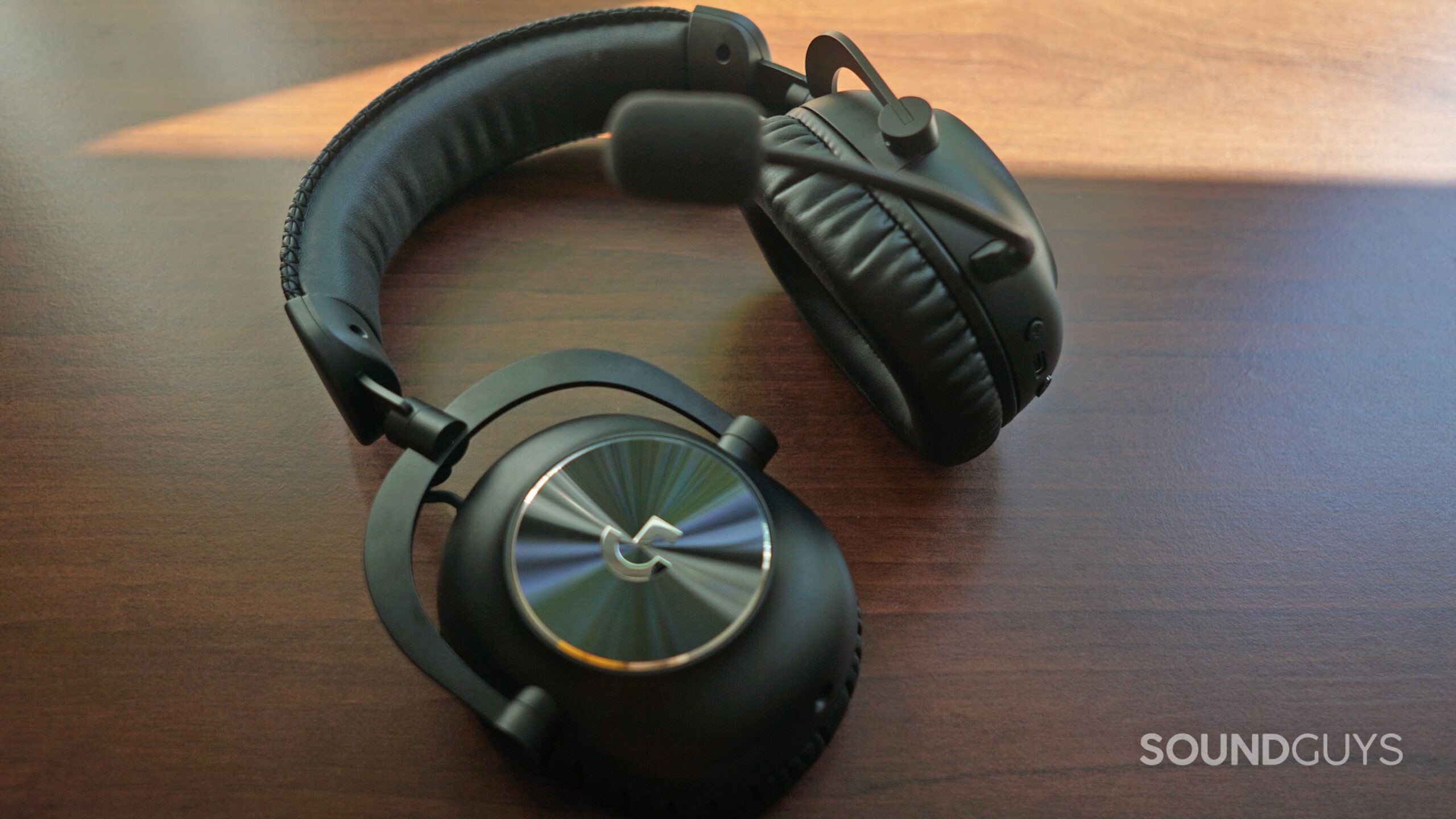
Nearly two years after its release, the Logitech G PRO X 2 LIGHTSPEED remains a compelling option for those seeking a high-end gaming headset with excellent sound quality, robust features, and multi-platform connectivity. It delivers impressive audio performance, exceptional comfort for extended sessions, and software features that enhance the overall experience.
However, if you’re buying this expecting revolutionary sound from the graphene drivers, I’d suggest adjusting your expectations—while it sounds excellent, it still falls within the realm of premium gaming headsets rather than representing a paradigm shift in audio technology.
After two weeks of daily use across multiple platforms and dozens of games and music albums, I’ve come to appreciate why this headset has maintained its position in the market despite newer competitors. The battery life alone sets it apart from many recent releases that sacrifice longevity for lighter designs. The robust build quality suggests it will continue to function reliably long after many of its competitors have deteriorated.
At its current price point (which has seen occasional discounts since its release), it continues to compete effectively with newer alternatives, offering a balanced combination of performance, features, and build quality that keeps it relevant in the ever-evolving gaming headset market. While newer models may offer features like ANC or lighter designs, the G PRO X 2 LIGHTSPEED remains a benchmark against which I find myself measuring other premium gaming headsets—even in 2025.


What should you get instead of the Logitech G PRO X 2 LIGHTSPEED?
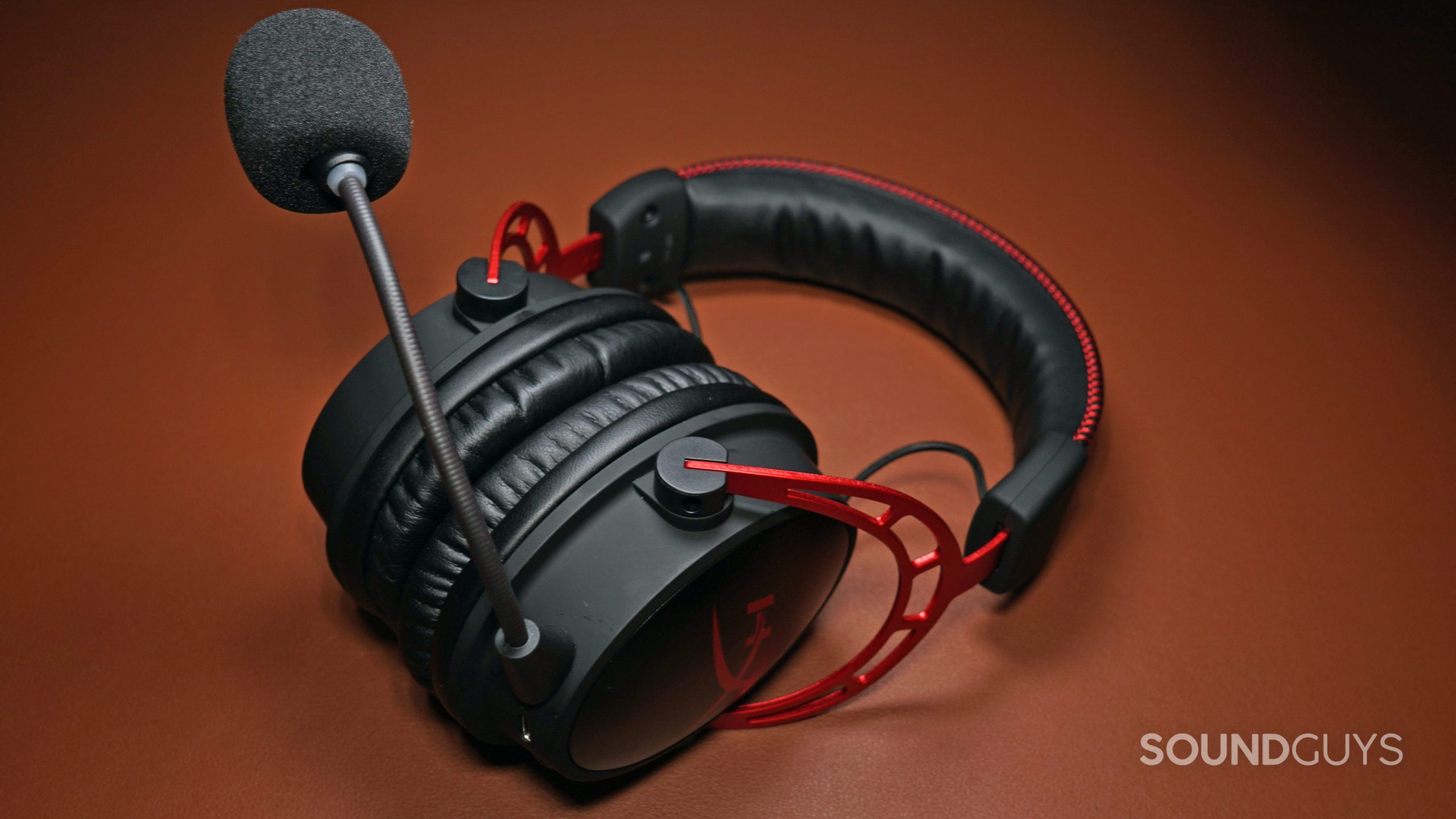
If you’re in the market for a higher-end wireless gaming headset, the three I mentioned in the battery section should probably be the place to look. The HyperX Cloud Alpha Wireless has the best single-charge battery capacity of any gaming headset on the market (or headphones of any variety), and it’s not even close. In our testing, it lasted 327 hours, which is about 13 and a half days straight. The headset also features the same comfort and sound quality that’s made the wired HyperX Cloud Alpha a perennial mainstay among gamers for years. You can get it for $151 at Amazon.
I say “single charge” for the Cloud Alpha Wireless to highlight the difference between it and the Turtle Beach Stealth Pro and the SteelSeries Arctis Nova Pro Wireless—these two headsets feature functionally unlimited battery life, with hot-swappable batteries that let you pop a new one in every time the one you’re using runs out of juice. Both feature ANC, comfortable designs, and USB wireless base stations for connecting the headset to your device of choice—the base stations also both sport charging docks for the additional battery that comes with the headset, so you’ll always have one charging while the other is in use. They’re definitely more expensive options (You can get the Turtle Beach for $329 at Amazon, and the SteelSeries for $349.99 at Amazon), but they come loaded with features.
Frequently asked questions about the Logitech G PRO X 2 LIGHTSPEED
Yes, the G PRO X 2 LIGHTSPEED remains worth its price for gamers seeking a premium wireless headset with excellent battery life, sound quality, and comfort. The value proposition has improved as the price has occasionally dropped since release. If you prioritize battery life, build quality, and cross-platform functionality over newer features like ANC, it’s still one of the better options on the market.
The original G Pro X is a wired headset, while the G Pro X Lightspeed is its wireless counterpart. The G Pro X Lightspeed adds wireless connectivity via a 2.4GHz USB dongle, Bluetooth capability, and an internal battery but maintains the same core audio performance and design as the wired version. The G Pro X 2 LIGHTSPEED reviewed here is the successor to both models.
Yes, you can also buy the G Pro X 2 LIGHTSPEED in white.
Yes, you can use the Logitech G Pro X 2 Lightspeed while it’s charging, but you’ll still need to have the wireless USB dongle plugged in.
Yes, the G Pro X 2 LIGHTSPEED can be used wired via its included 3.5mm cable. However, the headset must be powered off to use the wired connection, meaning you can’t access the Blue Voice microphone features or EQ settings when using it in wired mode. The wired connection works with any device that has a 3.5mm headphone jack.
The G Pro X 2 LIGHTSPEED improves upon the original G Pro X with several key upgrades: graphene drivers (versus the Pro Driver in the original), improved hinges with better flexibility, enhanced battery life (up to 50 hours officially vs. 20 hours), Bluetooth connectivity in addition to the 2.4GHz wireless, and a more streamlined design. The G Pro X 2 also offers better cross-platform compatibility and includes both leatherette and velour ear pads by default.